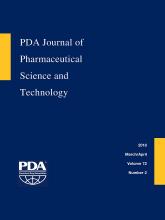Abstract
Data integrity is critical to regulatory compliance, and the fundamental reason for 21 CFR Part 11 published by the U.S. Food and Drug Administration (FDA). FDA published the first guideline in 1963, and since then FDA and European Union (EU) have published numerous guidelines on various topics related to data integrity for the pharmaceutical industry. Regulators wanted to make certain that industry capture accurate data during the drug development lifecycle and through commercialization—consider the number of warning letters issued lately by inspectors across the globe on data integrity. This article discusses the history of regulations put forward by various regulatory bodies, the term ALCOA Plus adopted by regulators, the impact of not following regulations, and some prevention methods by using some simple checklists, self-audit, and self-inspection techniques. FDA uses the acronym ALCOA to define its expectations of electronic data. ALCOA stands for Attributable, Legible, Contemporaneous, Original, and Accurate. ALCOA was further expanded to ALCOA Plus, and the Plus means Enduring, Available and Accessible, Complete, Consistent, Credible, and Corroborated. If we do not follow the regulations as written, then there is a huge risk. This article covers some of the risk aspects. To prevent data integrity, various solutions can be implemented such as a simple checklist for various systems, self-audit, and self-inspections. To do that we have to develop strategy, people, implement better business processes, and gain a better understanding of data lifecycle as well as technology.
LAY ABSTRACT: If one does a Google search on “What is data integrity?” the first page will give the definition of data integrity, how to learn more about data integrity, the history of data integrity, risk management of data integrity, and at the top about various U.S. Food and Drug Administration (FDA) and European Union (EU) regulations. Data integrity is nothing but about accuracy of data. When someone searches Google for some words, we expect accurate results that we can rely on. The same principle applies during the drug development lifecycle. Pharmaceutical industry ensures that data entered for various steps of drug development is accurate so that we can have confidence that the drugs produced by the industry are within some parameters. The regulations put forward by FDA and EU are not new. The first regulation was published in 1963, and after that regulators published multiple guidelines. Inspectors from both regulatory bodies inspected the industry, and they found that the data was not accurate. If pharmaceutical industry produces drugs within the stated parameters, then it is approved and available in the market for patients. If inspectors find that the data is modified, then the drug is not approved. That means revenue loss for industry and drugs not available for patients. In this article, I explain some of the remediation plans for the industry that can be applied during the drug development lifecycle pathway.
- © PDA, Inc. 2018
PDA members receive access to all articles published in the current year and previous volume year. Institutional subscribers received access to all content. Log in below to receive access to this article if you are either of these.
If you are neither or you are a PDA member trying to access an article outside of your membership license, then you must purchase access to this article (below). If you do not have a username or password for JPST, you will be required to create an account prior to purchasing.
Full issue PDFs are for PDA members only.
Note to pda.org users
The PDA and PDA bookstore websites (www.pda.org and www.pda.org/bookstore) are separate websites from the PDA JPST website. When you first join PDA, your initial UserID and Password are sent to HighWirePress to create your PDA JPST account. Subsequent UserrID and Password changes required at the PDA websites will not pass on to PDA JPST and vice versa. If you forget your PDA JPST UserID and/or Password, you can request help to retrieve UserID and reset Password below.






